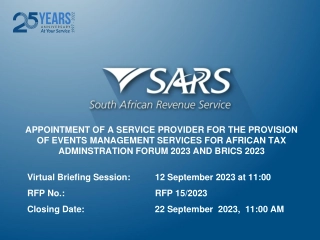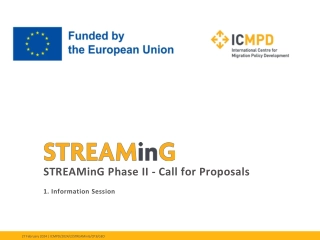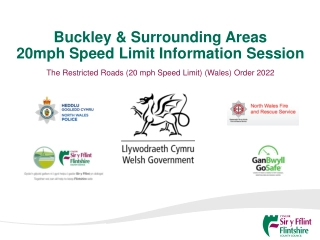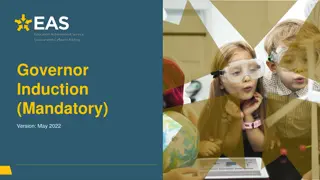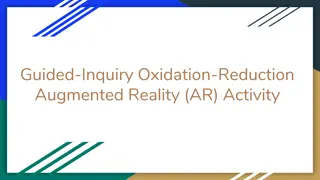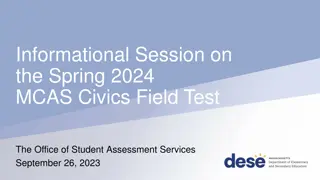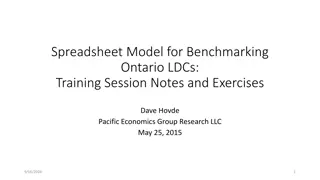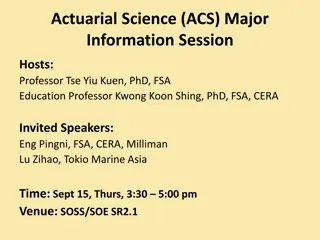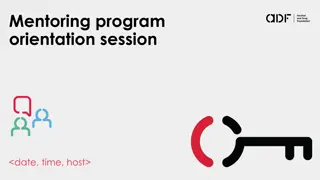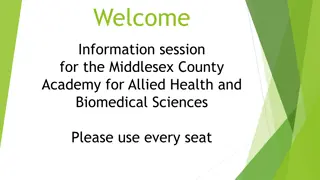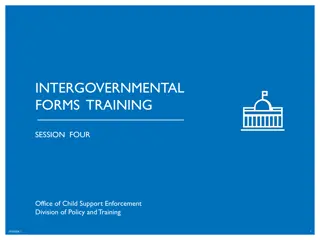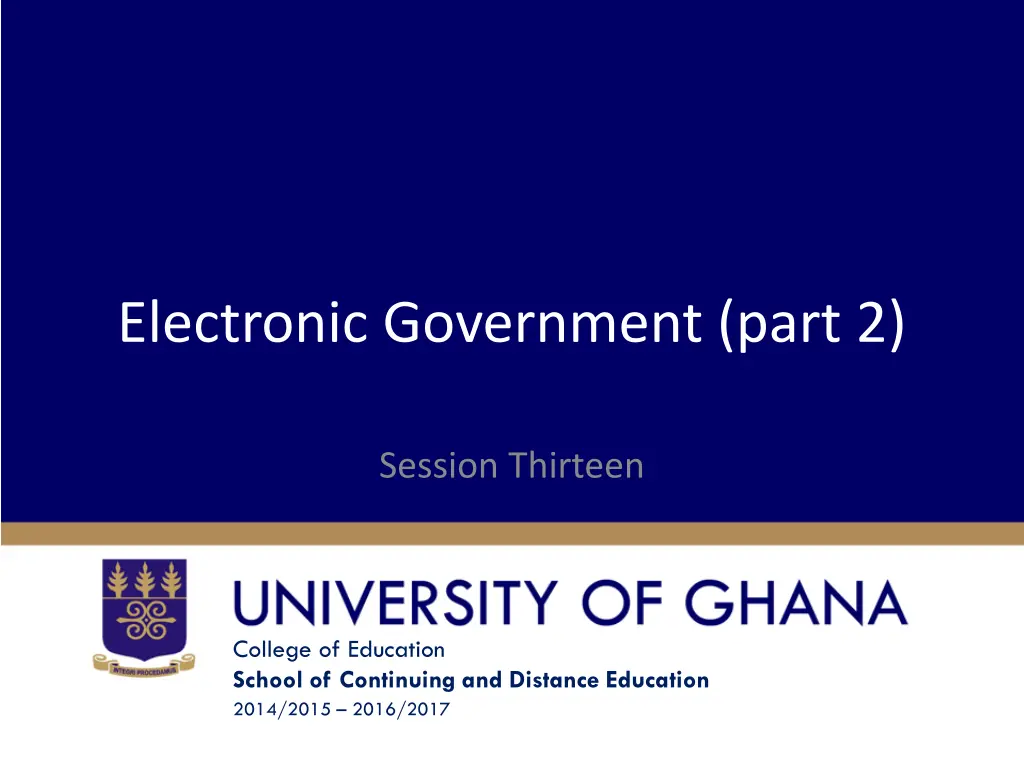
Impacts of ICT on Public Administration: College Session Insights
Explore how Information and Communication Technology (ICT) has revolutionized public administration in a college session spanning 2014-2017. Discover the positive influences on policy analysis, modernization of public service, and solutions to administrative challenges through the integration of ICT.
Download Presentation

Please find below an Image/Link to download the presentation.
The content on the website is provided AS IS for your information and personal use only. It may not be sold, licensed, or shared on other websites without obtaining consent from the author. If you encounter any issues during the download, it is possible that the publisher has removed the file from their server.
You are allowed to download the files provided on this website for personal or commercial use, subject to the condition that they are used lawfully. All files are the property of their respective owners.
The content on the website is provided AS IS for your information and personal use only. It may not be sold, licensed, or shared on other websites without obtaining consent from the author.
E N D
Presentation Transcript
Electronic Government (part 2) Session Thirteen College of Education School of Continuing and Distance Education 2014/2015 2016/2017
Session Overview The potential for electronic government or e- government to transform public administration has been hailed as a remarkable development in the history of government administration. Since the 1990s, the internet, computers, and other information systems has become widespread in the public service. Yet there are real challenges regarding particular access to ICT by most public organizations. Slide 2
Session outline The following topics will be discussed Topic one: positive impact of ICT on public administration. Topic two: negative impact of ICT on public administration. Slide 3
Positive impact of ICT on public administration Topic one College of Education School of Continuing and Distance Education 2014/2015 2016/2017
ICT improves Policy Analysis ICT helps in analyzing government policies. The calculation of quasi-adjusted life years in health care has become increasingly sophisticated, and computer programmers make it easy to solve. Furthermore, long-standing problem of bounded rationality can be tackled with the aid of computers which help to simulate policy alternatives. Slide 5
ICT has Modernized the Public Service Again, computers and communications technology are viewed as the key to bringing public administration to date. They have come to modernize government operations and activities. Government has been able to used ICT to transform the internal operations of its agencies and departments. Slide 6
A Solution to Administrative Problems It is a potential cheap and effective solution to long- standing administrative problems. The public service is able to process more transactions rapidly with less staff when computers and internet were introduced into government operations. Monies processed within governmental organizations have been done via the computer. With the computer and internet systems, citizens are able to pay their taxes with considerable ease. Slide 7
Improving citizens-government relations ICT has changed the relationship between citizens and government. This is because e-government has facilitated government information services. This has further encouraged citizens participation in public affairs. Slide 8
Improving citizens-government relations It empowers citizens in their dealings with the government. Government s websites and e-mail systems have become the means through which citizens are engaging their governments in many aspects of governance. Today, government s information is disseminated to citizens through the internet. These technologies can create a more transparent government because they allow voters to immediately see how and why their representatives are voting the way they are. This helps voters better decide who to vote for in the future. Slide 9
Speed, efficiency, and convenience E-government eliminates physical travels by government agents. As a result, forms can be easily accessed and quickly processed. Information can be retrieved easily because files are linked to information stored in databases rather than hardcopies stored in various locations. Persons with disabilities can obtain information with ease from the comfort of their own homes. Slide 10
Negative impact of ICT on Public Administration Topic two College of Education School of Continuing and Distance Education 2014/2015 2016/2017
Spread of ICT is Slow Most public organizations, particularly in developing countries, are yet to taste the power of internet and computers. The public sector still lags behind in the spread of ICT in comparison with the private sector. Even in countries with high internet facilities, penetration rates of information technologies on government organizations have been generally slow. Slide 12
System Failure Syndrome In developing societies, one problem with e- government is the information systems failure. ICT appears to be a mirage because there is a high rate of underperformance of the IT systems. Slide 13
Inadequate Experts and Funding It is common place that ICT is capital intensive. The huge financial resource involves in ICT poses budgetary burden on poor countries in Africa. The very few experts to fix problems mean that government websites would be inactive for several days and even months in most developing countries. Slide 14
Sample question Examine the influence of Information Communication Technology on the public sector in Ghana Would you say that the evolution of Information Communication Technology revolution has modernized Ghana s public administration? Slide 15
Reference Margetts, H. (2007). Electronic Government: A Revolution in Public Administration ? in G. Peters and J. Pierre (eds.) Handbook of Public Administration. Sage Publications: London. Slide 16
References Anderson, J. (1984). Public Policy Making, 3rd edn. CBS College: New York. Ayee, J.R.A. (2008). Reforming the African Public Sector: Retrospect and Prospects. CODESRIA Green Book: Dakar. Ayee, J.R.A. (1999). Decentralization and Conflict: The case of the District Chief Executive and Members of Parliament in Ghana. Friedrich Ebert Foundation: Accra. Bardham, P and Mookherjee, D. (2008). Decentralization and Local Governance in Developing Countries: A Comparative Perspective. Massachusetts Institute of Technology: Cambridge, USA. Slide 17 X
References Barnard, C. I. (1984). The Executive Functions , in Stillman, Richard J. (ed). Public Administration: Concepts and Cases 3rd edn. Houghton Mifflin: USA. Berkley, George John Rouse. (2000). The Craft of Public Administration 8th edn. McGraw-Hill: USA. Brown, Mary Maureen. (2003). Electronic Government , pp. 427- 432. in Jack Rabin (ed.) Encyclopedia of Public Administration and Public Policy. Marcel Dekker. Slide 18
References Buchanan, James. M. (2003). Public Choice: The Origins and Development of a Research Program. George Mason University: Fairfax, VA. Burnham, D. (1983). The Rise of the Computer State. Weidenfeld and Nicolson: London. Dye, T. (2008). Understanding Public Policy 12th edn. Englewood Cliffs: New Jersey. Gaus, J. M. (2006). Reflections on Public Administration. University of Alabama Press: Alabama. Slide 19
References Hood, C. (1994). Economic Rationalization in Public Management , Explaining Economic Policy Reversals. Open University Press: Buckingham. Kanigel, Robert .(1997). The One Best Way: Frederick Winslow Taylor and the Enigma of Efficiency. Viking: New York. Margetts, H. (2007). Electronic Government: A Revolution in Public Administration ? in G. Peters and J. Pierre (eds.) Handbook of Public Administration. Sage Publications: London. Slide 20
References Osborne, D and Gaebler, Ted. (1993). Reinventing Government: How the Entrepreneurial Spirit is Transforming the Public Sector. N.Y: Penguin Books. Ostrom, Vincent J. (1973). The Intellectual Crisis in American Public Administration, The University of Alabama Press: Tuscaloosa, A.L. Paulinaidu, S. (2004). Public Administration,Galgotia: New Delhi. Riggs, Fred. W. (1991).Public Administration: A Comparativist Framework, Public Administration Review 51 (6): 473-477. Stillman, R. (2004). Public Administration: Concepts and Cases 8 ed. Wadsworth Publishing Slide 21


